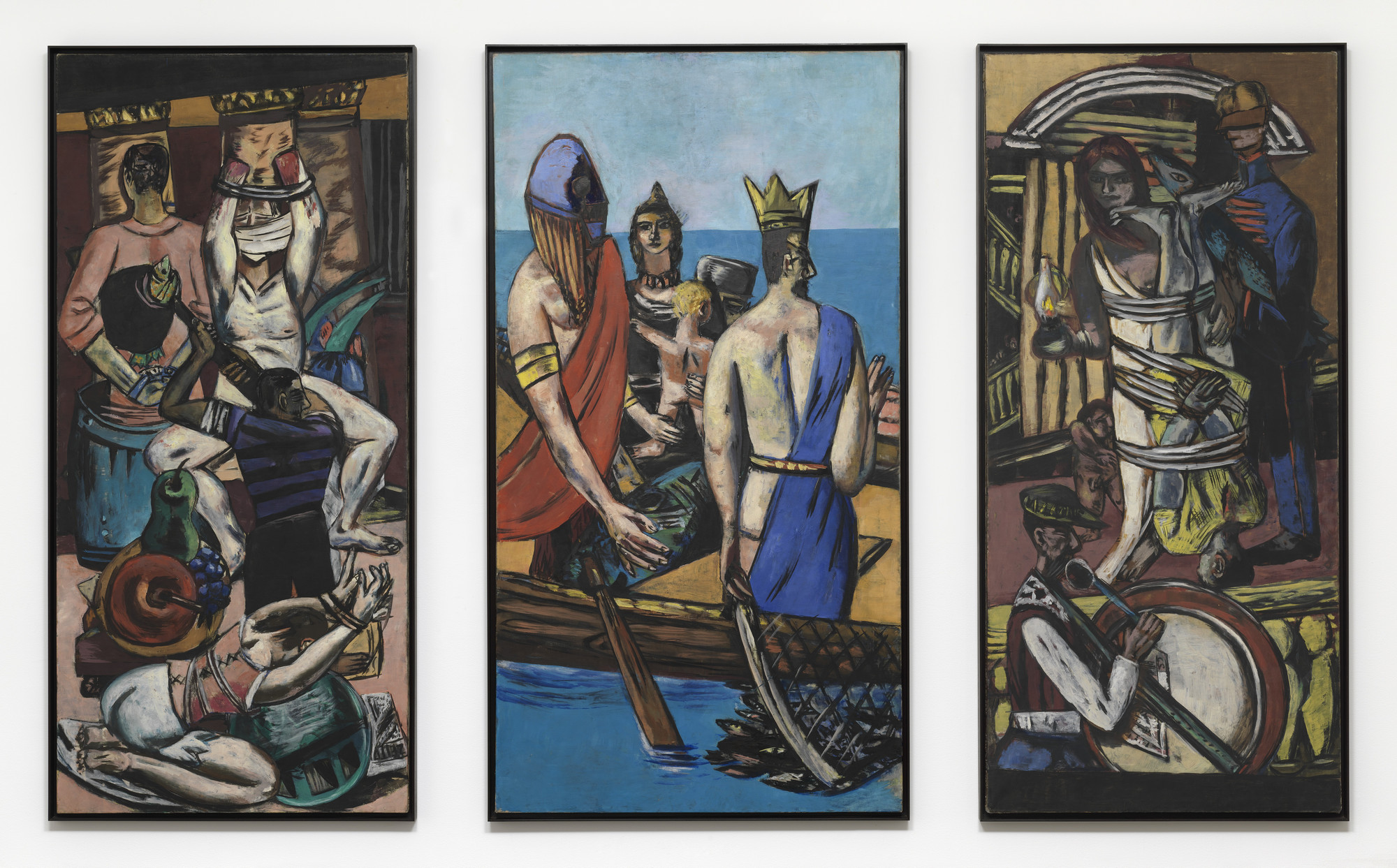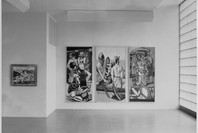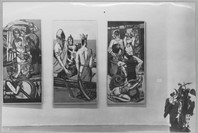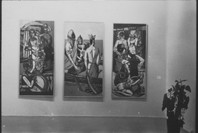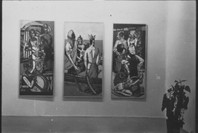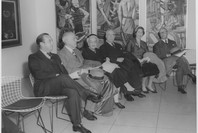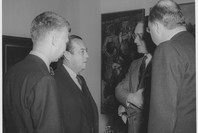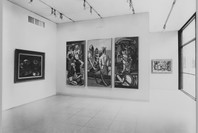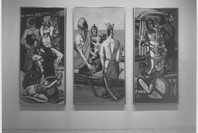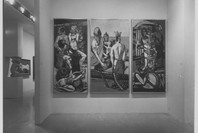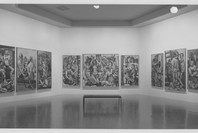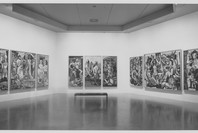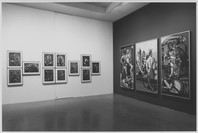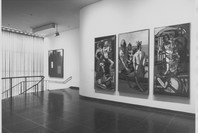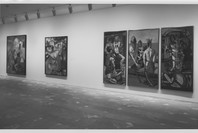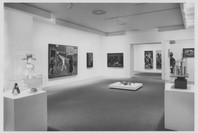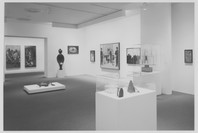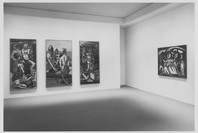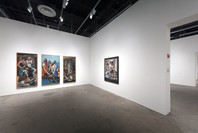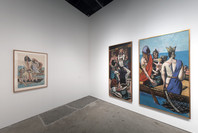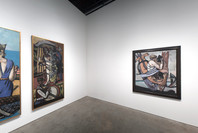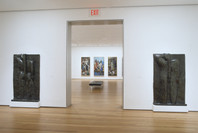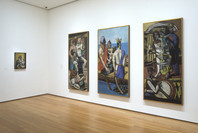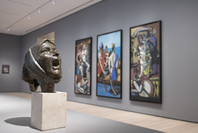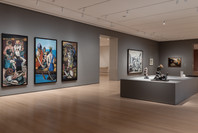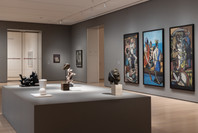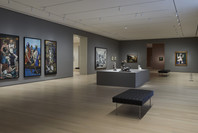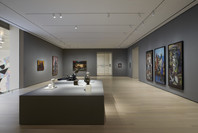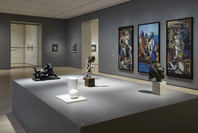Across Departure’s three panels, Beckmann juxtaposed images of restraint and release, aggression and refuge, contraction and openness. While the work is a triptych—a format traditionally used (in Christian altarpieces, for example) to convey an explicit narrative or meaning—Departure’s symbolic message remains ambiguous. Bound, mutilated, blindfolded, or clamping their eyes shut, the figures in the outer panels are victims of sadistic violence. However, their circumstances are uncertain; perhaps they are actors on a stage, accompanied at left by such incongruous props as a tilted still life and a crystal ball. In the center, passengers from another time—a king and queen with a child, a warrior figure, and a sailor—stand solemnly on a barge gliding on calm seas. The blue sky and net teeming with fish suggest good fortune.
Beckmann painted Departure in a time of mounting terror and uncertainty, as Adolf Hitler gained power in the artist’s native Germany. The painting was completed over several years, during which the artist was dismissed from his teaching position in Frankfurt and forced to move to Berlin, then to Amsterdam. The Nazi party had deemed Beckmann’s art “degenerate,” and he was among hundreds of artists whose work was censored for alleged immoral or anti-German qualities. While the painting is widely considered a biographical response to this period, Beckmann asserted a universal message: “Departure bears no tendentious meaning—it could well be applied to all times.”
Publication excerpt from MoMA Highlights: 375 Works from The Museum of Modern Art, New York (New York: The Museum of Modern Art, 2019)
Although Beckmann denied that Departure carried any specific political content, the painting has come to be seen as one of the emblematic artistic responses to Hitler’s Germany. It was begun at the time that the Nazis fired Beckmann from his professorship at the Frankfurt Art Academy, and presages his forced emigration. Departure is the first of Beckmann’s several major paintings in the form of a triptych, a three-part format that recalls medieval or Renaissance altarpieces. The elaborate narrative includes scenes of sin and salvation, but what makes the painting modern is the deliberate ambiguity of its iconography. When the New York City art dealer who bought the painting in 1937 wrote to Beckmann to say that his visitors wanted specific explanations of the images, the artist replied "if people cannot understand it of their own accord, . . . there is no sense in showing it."
Gallery label from 2012.
